Last week was the start of a great adventure for me. I’d gritted my teeth and made the decision to fly to Lisbon. It wasn’t the destination that bothered me, but the method of travel — I confess, I’m a very nervous passenger.
Anyway, I’m so glad I overcame my fears because I had a wonderful time. The people, the scenery, and the food, were all great. And the history was fantastic … well research was the main purpose of my trip after all.
I’ve read so much about Wellington’s Peninsular Campaigns, but nothing beats actually seeing for oneself the places that were involved. In addition to a better understanding of the challenges the British army faced in their endeavours to defeat the French, visiting the area increased my understanding of the obstacles imposed by the landscape itself, and I learned how Wellesley used this difficult terrain to ensure his advantage.
We were lucky to have the services of Mark Crathorne of the British Historical Society of Portugal, whose knowledge of the Peninsular Wars is second to none. We were only able to spend one day with Mark, but he managed to pack so much in, that I was not disappointed even though I knew I was only touching on a brief part of Wellington’s Peninsular Campaign.
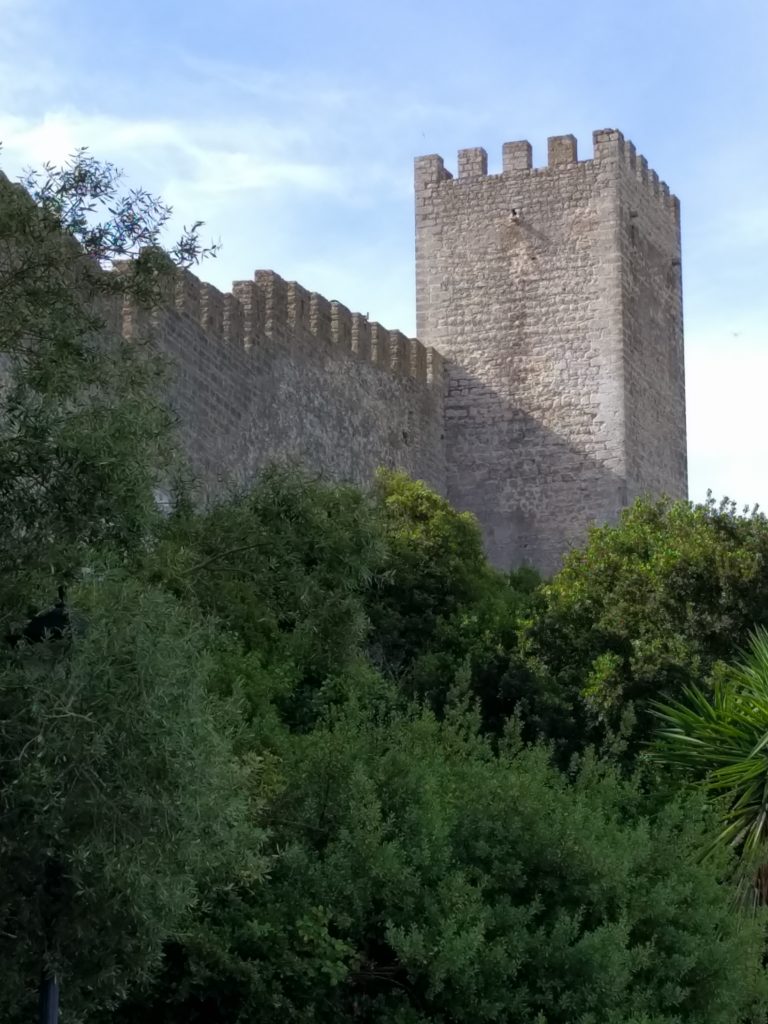
We started early in the morning, heading first for Óbidos to see the site of the first skirmish between Wellesley’s army and the French Army of Portugal at Brilos, on 15th August 1808. This action resulted in the death of the first British casualty, Lieutenant Bunbury of the 95th Rifles. Looking out from the town walls over the surrounding landscape one could easily imagine how things had played out in the intense heat.
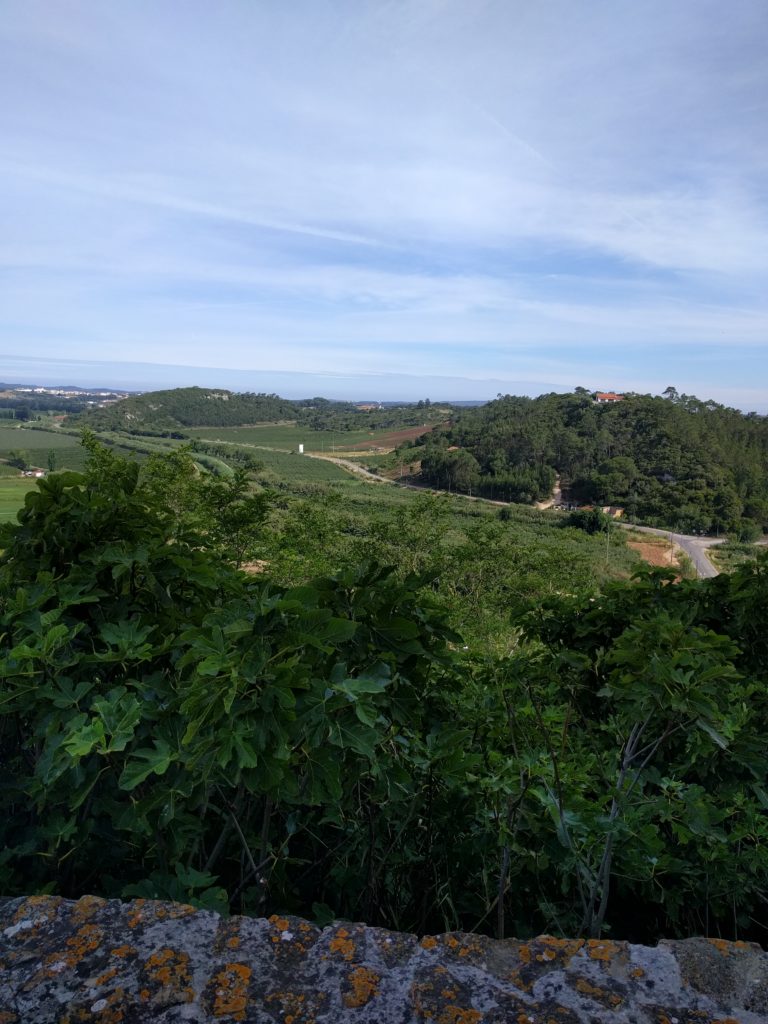
Mark pointed out the house in the town where Lt General Arthur Wellesley (as the Duke of Wellington was then known) stayed, and we also visited the pretty church with its tiled decorations.
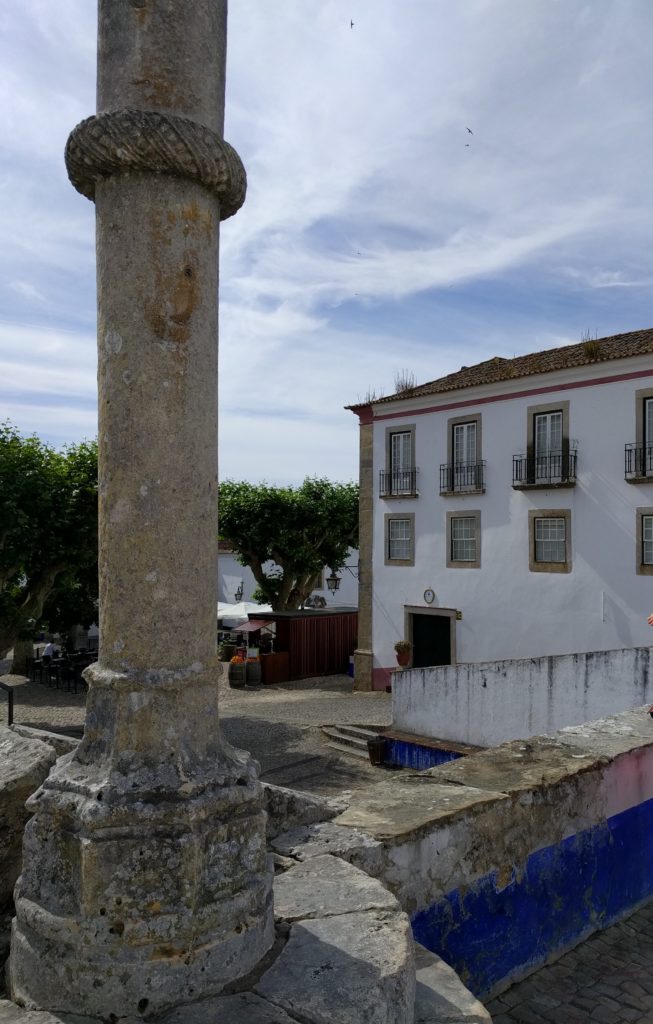
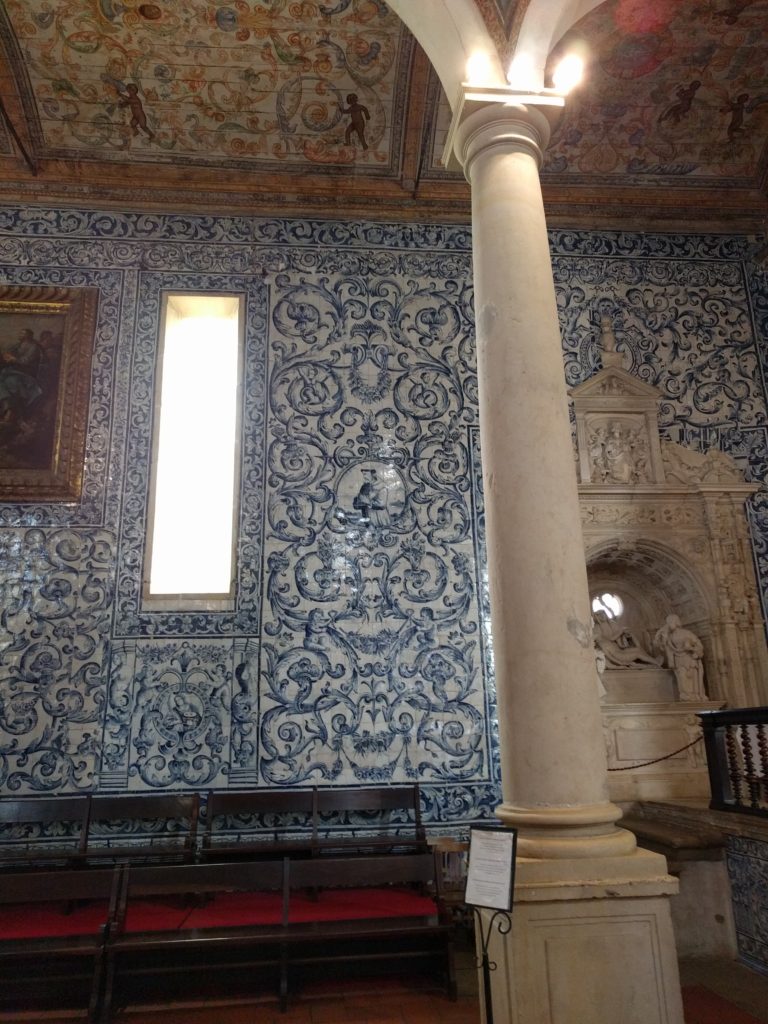
the tiled interior of the church at Óbidos 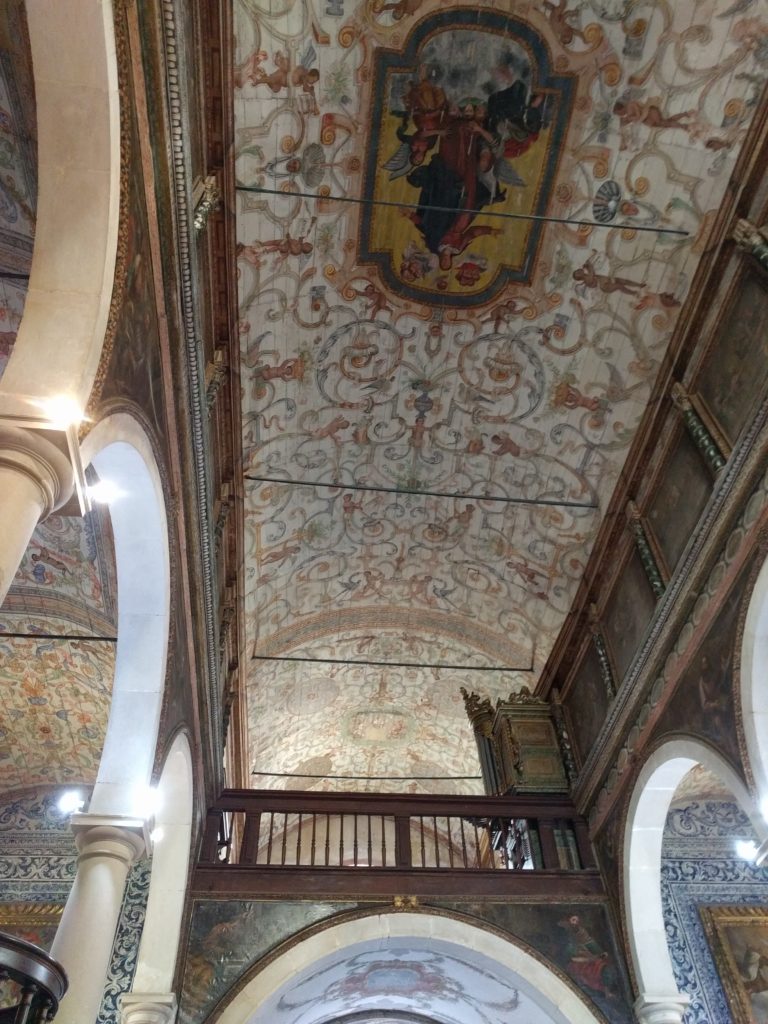
The painted ceiling of the church
From there we headed to Roliça, and after a short break for coffee and delicious freshly-baked cakes, we drove past a depiction of the Battle of Roliça painted on ceramic tiles.
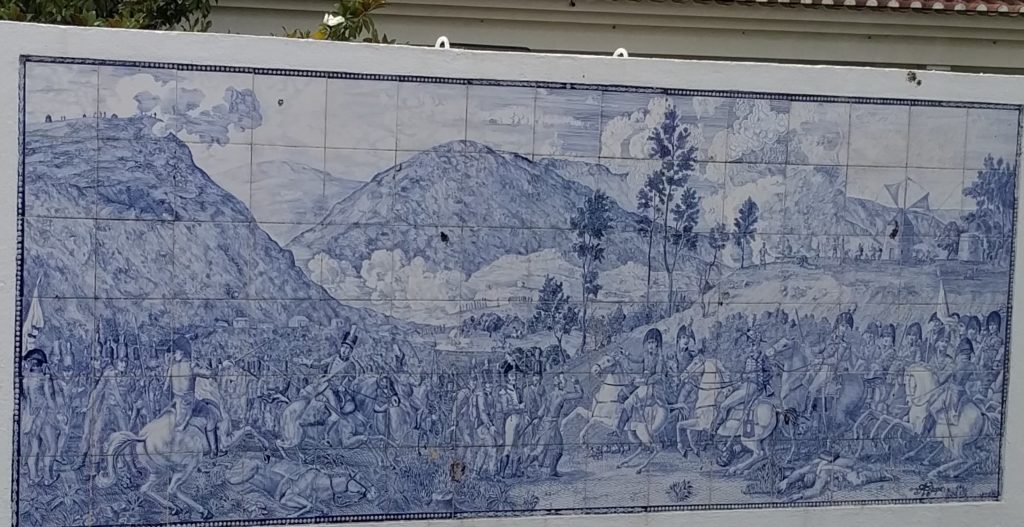
A little further on, we parked again and gazed at the steep hills, imagining what it would have been like to be a British soldier on 17th August 1808, looking towards the French-held heights. It was difficult terrain, with steep gullies, or defiles being the only direct way up to the French position.

But Wellesley was a master of strategy. He ordered one contingent to go up a central gully to distract the French, and ensure enemy attention was concentrated there, whilst two other contingents, made up of British and Portuguese troops, were sent east and west, to surround the enemy in a pincer movement.
Unfortunately, the central ‘distracting’ contingent, consisting of the 29th Regiment of Foot, led by Colonel Lake, exceeded their orders and rushed up the gully, meeting the French head-on at the top of the ridge. Colonel Lake and most of his men were killed.
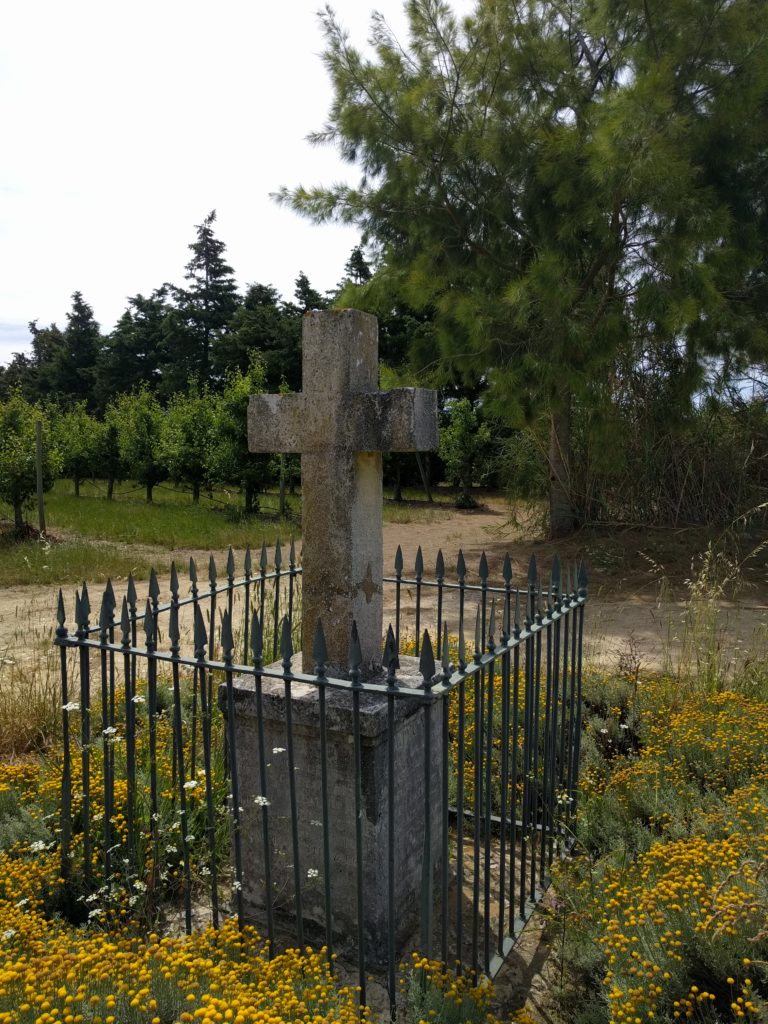
Wellesley then ordered more frontal attacks, and after hours of hard fighting, a foothold was finally gained on the heights. The two Anglo-Portuguese flanking forces had by now reached their positions and the French, under the command of General Delaborde, realising that they needed to retreat or they would be taken, withdrew. This was Wellesley’s first victory on the Peninsula.
We then visited the top of ridge where the French forces were based, above the village of Columbeira, and saw the cross erected in memory of Colonel Lake.
It was quite a shock, and a sobering moment for me, to see how close the two opposing forces would have been as they fired on each other; they would definitely have been able to stare into each other’s eyes.

From here we went to the coast, to briefly view the landing site of Anstruther’s brigade at Paimogo before heading off for lunch in Vimeiro.
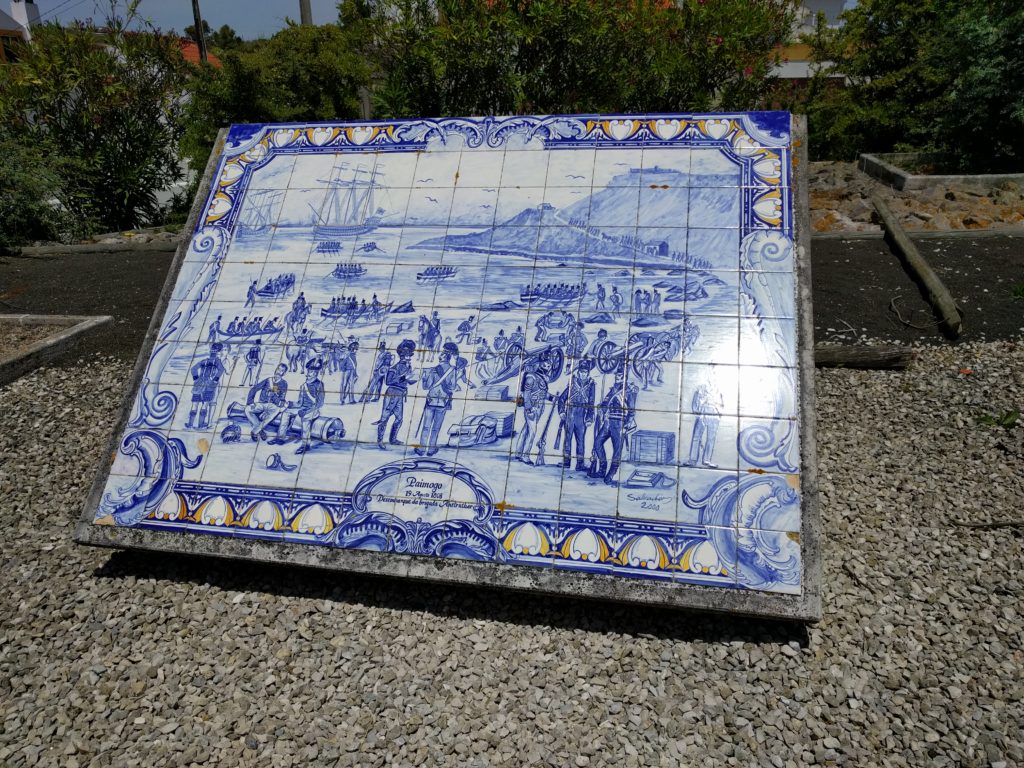
After lunch we visited the wonderful museum and monument at Vimeiro, with Mark’s commentary bringing the battle to life as we stood on Vimeiro Hill looking down over the area the French would have had to negotiate. I would recommend a visit to the museum; there is a marvellous timeline and some amazing artefacts found on the battlefield, not to mention lots of examples of weapons and uniforms.
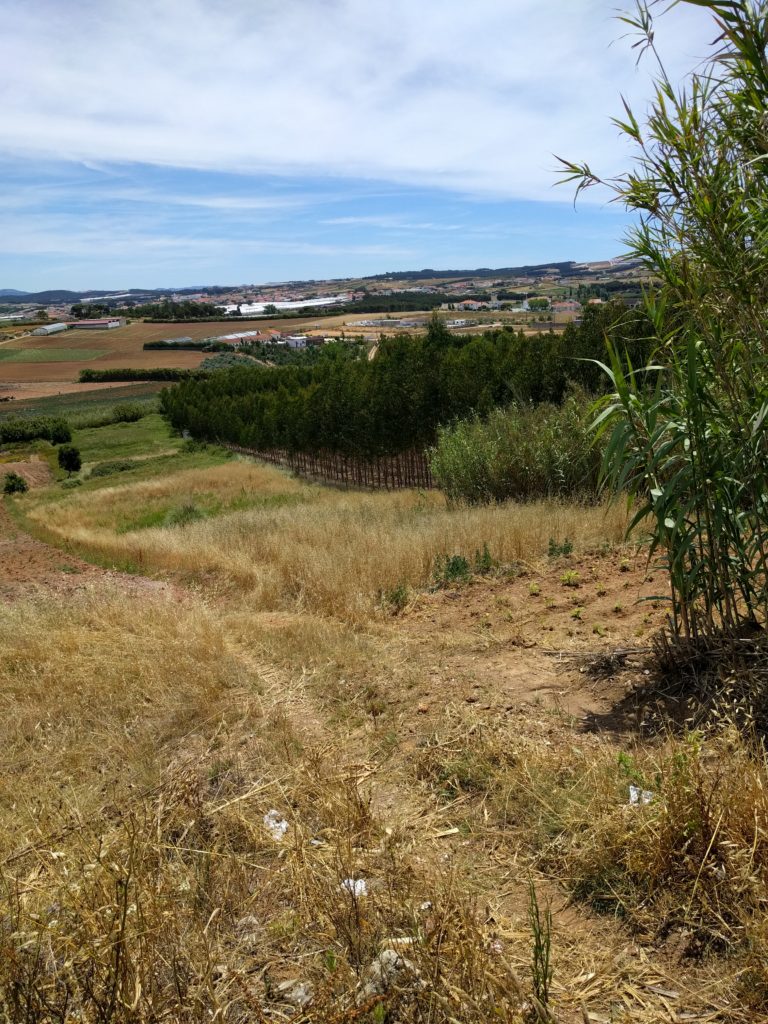
I learned that it was at this battle that Wellesley proved that using his troops in lines was superior to the French use of columns when engaging the enemy. This battle was also the first time that shrapnel was used, a horrible but effective device invented by a British Army officer, Lieutenant General Henry Shrapnel.
Wellesley’s victory at Vimeiro marked the end of the first of the three French invasions of Portugal. The French sued for peace, and departed Portugal under the terms of a controversial agreement known as the Convention of Sintra, whereby their troops, weapons, and spoils, were repatriated courtesy of the Royal Navy.
And there I will leave my report of the day. From Vimeiro we drove on towards the Lines of Torres Vedras, but that will be the subject of another post.

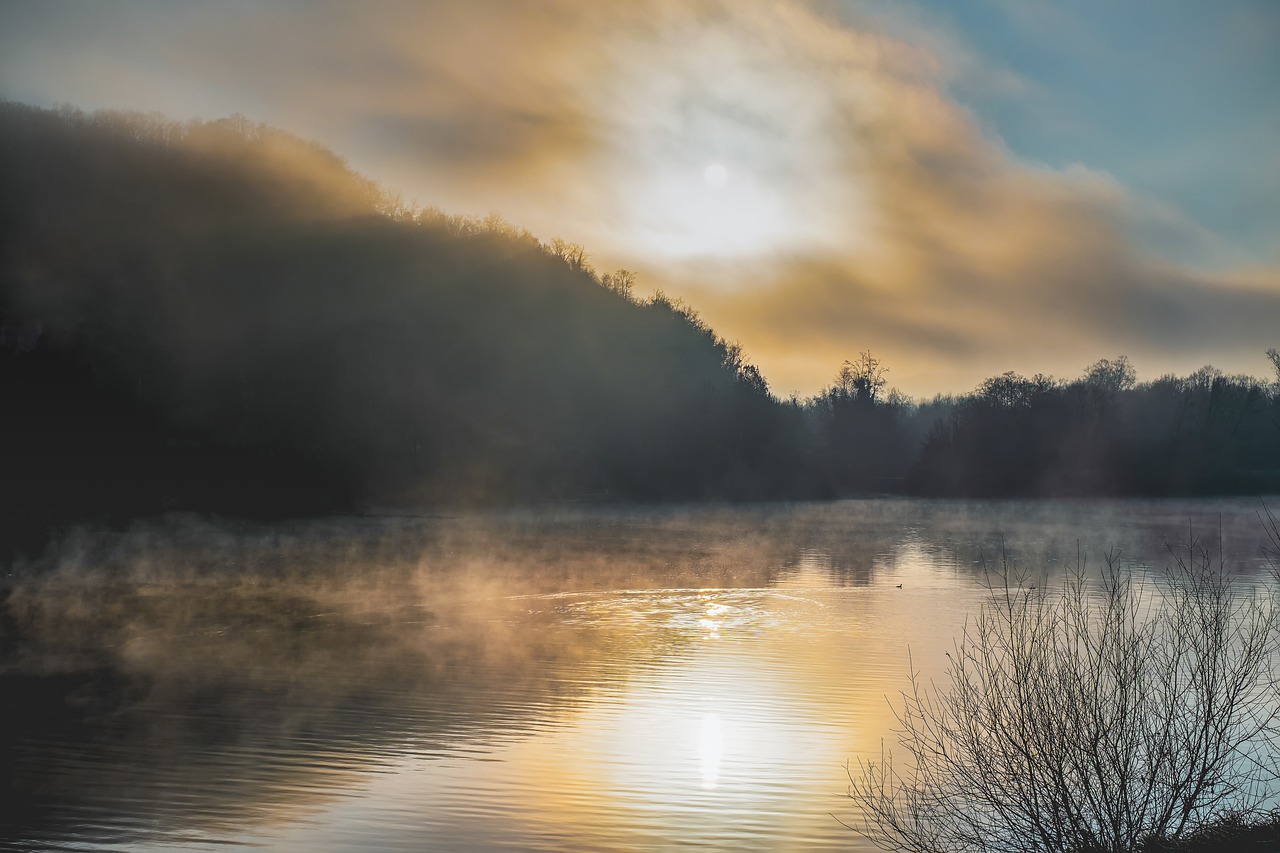
One Response